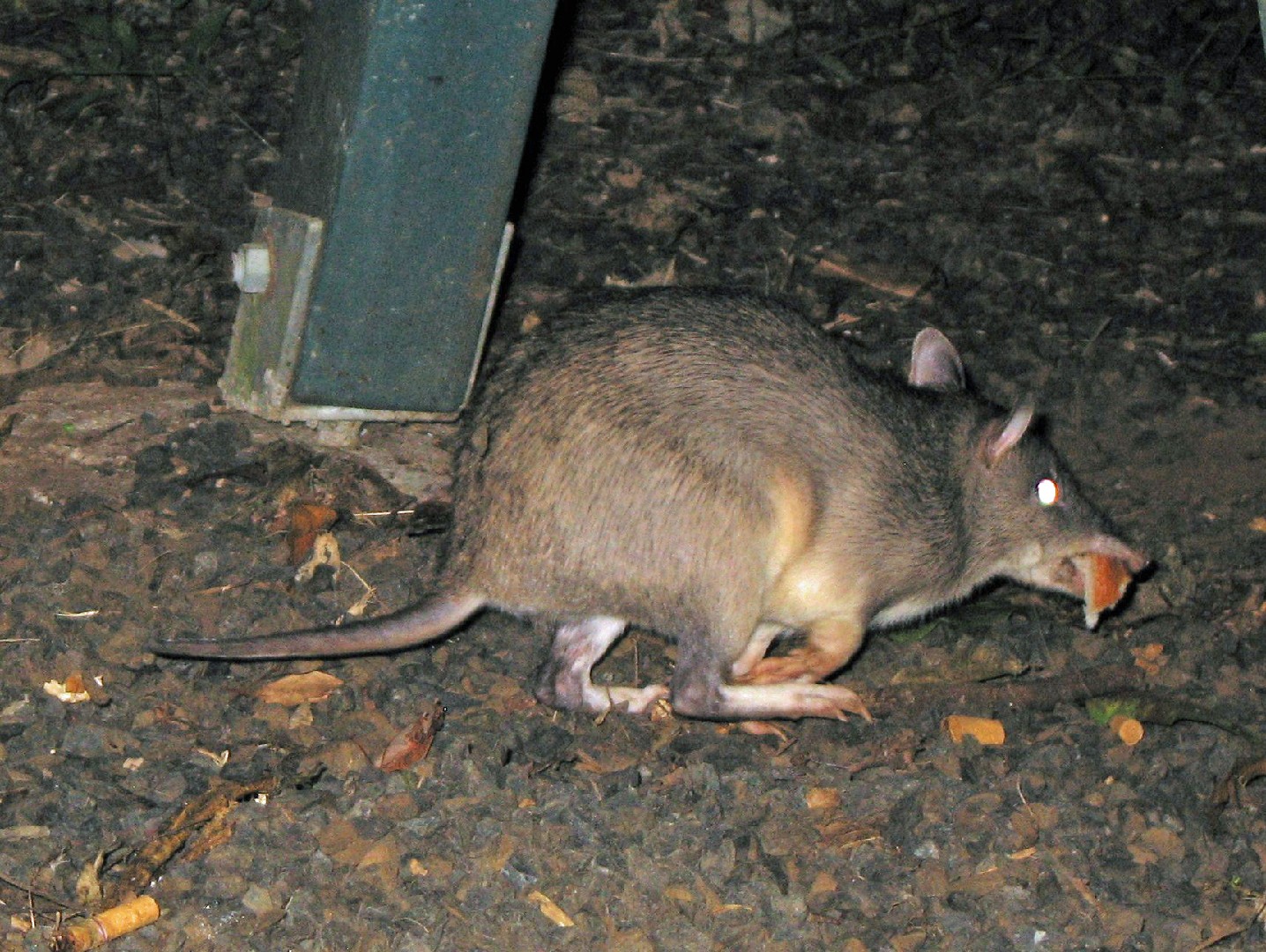Northern brown bandicoot
A species of Short-nosed bandicoots Scientific name : Isoodon macrourus Genus : Short-nosed bandicoots
Northern brown bandicoot, A species of Short-nosed bandicoots
Scientific name: Isoodon macrourus
Genus: Short-nosed bandicoots
Content
Description General Info
 Photo By Greg Schechter , used under CC-BY-2.0 /Cropped and compressed from original
Photo By Greg Schechter , used under CC-BY-2.0 /Cropped and compressed from original Description
This species can be set apart from other marsupials by two traits. It is both polyprotodont (i.e., several pairs of lower front teeth) and syndactylous. The northern brown bandicoot has typical body and tail lengths of 40 and 15 cm (15.7 and 5.9 in), respectively. On average it weighs 1,200 g (2.6 lb). This marsupial has a thick harsh coat but is not spiny. The dorsal pelage is light brown in appearance with speckled black patterns throughout. On the ventral surface it is solid white. The northern brown bandicoot has a reverse pouch so it won't fill with soil when digging. This bandicoot also has short, rounded ears and a short nose. One can easily mistake northern brown bandicoot for the southern brown bandicoot. The two species differ in both size, with the northern brown bandicoot larger, and regional locality, in that the southern brown bandicoot is found only on the southern coastline of Australia. The male is typically 5–7 cm (2.0–2.8 in) longer and about 0.5 kilograms (1.1 lb) heavier than the female. 
General Info
Lifespan
8-10 years
Diet
Northern brown bandicoot's diet predominantly consists of insects and their larvae. Supplementing this, they consume seeds, fruits, and roots, employing their pointed snouts for efficient foraging through leaf litter and soil.
Appearance
The northern brown bandicoot is a medium-sized marsupial with a thick, coarse fur that is generally golden-brown to grey-brown. It has a robust body, short limbs, and a pointed snout. Its hind legs are more powerfully built than the front ones, and it has a short tail. The northern brown bandicoot is identified by its distinctive conical head and the presence of strong canines. The males are usually larger and have more prominent canines than the females.
Behavior
Northern brown bandicoot are nocturnal marsupials, predominantly solitary with occasional social interactions. They forage extensively for food, excessively digging for roots, bulbs, and insects. This species is territorial and marks its area using scent from cheek glands. Its sharp claws and rugged feet are adapted for constant digging, indicating a significant survival behavior within its habitat.
Population
Stable
Scientific Classification
Phylum
Chordates Class
Mammals Order
Bandicoots and bilbies Family
Bandicoots Genus
Short-nosed bandicoots Species
Northern brown bandicoot